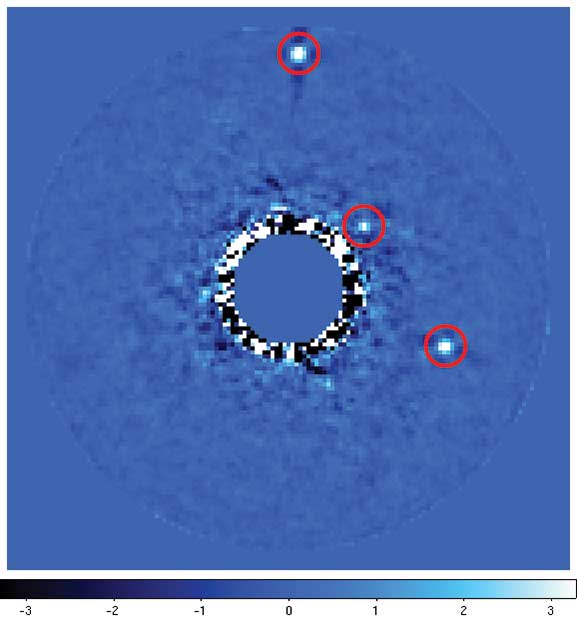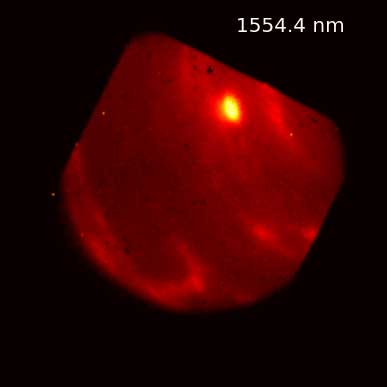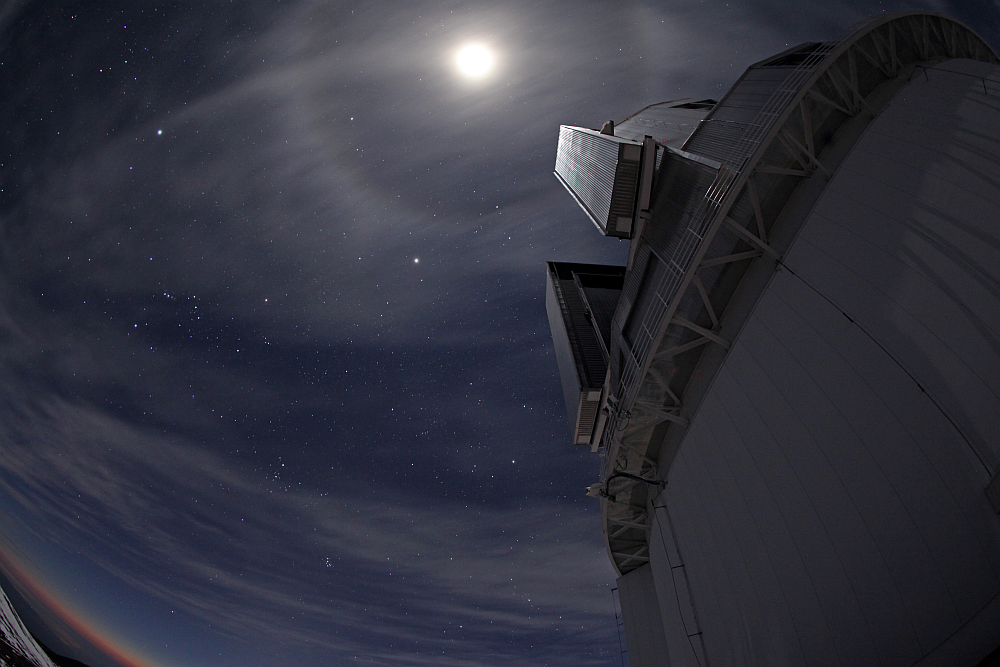The revelation that there are thousands of planets out there, orbiting other stars, is mostly due to the success of the Kepler mission. But now that we know these exoplanets are there, we want to know all about them. We want to know their mass, their temperature, how old they are, and pretty much everything else about them.
Now, a new instrument called the Coronagraphic High Angular Resolution Imaging Spectrograph (CHARIS) has captured the light from one of those exoplanets. This has the researchers excited about what they can see.
“We couldn’t have been more pleased by the results.” – N. Jeremy Kasdin
CHARIS allows astronomers to isolate light reflecting from planets. That’s difficult to do, since they are so much dimmer than the stars they orbit. CHARIS is able to isolate the reflective light from planets larger than Jupiter. Then astronomers can analyze that light to learn about the planet’s age, atmospheric composition, and its size.
“By analyzing the spectrum of a planet, we can really understand a lot about the planet. You can see specific features that can allow you to understand the mass, the temperature, the age of the planet.” – team member Tyler Groff

CHARIS was designed and built by a team led by N. Jeremy Kasdin, a professor of mechanical and aerospace engineering at Princeton University. It took them five years to build CHARIS.
The spectrograph sits inside a 500 lb case that measures 30x30x12. Inside that case, it’s kept at -223.15 Celsius (50 Kelvin, -369 F.) The CHARIS instrument has nine mirrors, five filters, two prism assemblies and a microlens array. The microlens array is a special optical device with an array of tiny lenses etched into its surface.

CHARIS works in conjunction with the Subaru Telescope in Hawaii. It’s part of a long-time collaboration between Princeton, the University of Tokyo and the National Astronomical Observatory of Japan, which operates the Subaru Telescope at Mauna Kea, Hawaii. And these first results are generating a lot of interest.
According to Tyler Groff, a team member from Princeton who now works for NASA, the preliminary result from CHARIS have generated a lot of interest from the astronomy community. The CHARIS team is now reviewing research proposals.
“There is a lot of excitement,” Groff said. “Charis is going to open for science in February to everyone.”
CHARIS is designed to capture the light from distant exoplanets, so its field of view is tiny. It’s only 2 arc-seconds, which is a tiny patch of sky. For reference, the full Moon is about 1,800 arc-seconds. But it can take images across a wide band of light wavelengths. The fact that it captures such a wide band of light is what allows such detailed analysis of anything it’s pointed at.
“We tested CHARIS on Neptune, but the entire planet doesn’t even fit on our detector.” -Tyler Groff
CHARIS is located behind a coronagraph. The coronagraph channels light from the Subaru Telescope and divides the light coming directly from a star from the light that is reflecting off planets orbiting that star. The team says it’s like picking out the light reflecting from a speck of tinsel floating in front of a spotlight that’s hundreds of miles away.


so, what is the mass, temperature and age for HR8799???
http://exoplanet.eu/catalog/?status=&f=%228799%22+in+name
Sorry the star itself is V3042 Peg, an A5 class variable
dammit, v0342 Peg.
Of course this sounds a great new instrument, though it’s a bit odd they thought about testing it on Neptune rather than Pluto. Ben Zuckerman’s team imaged 4 planets around this same star 7 years ago with a different instrument (2010 pdf paper on this page http://www.astro.ucla.edu/~ben/ including image) but when these images are so very difficult it’s good for another team/instrument to confirm the results.
Amazing how far we’ve come over a few short years when direct imaging is a phenomenal challenge. Imagine the views of Earth the extraterrestrials have!